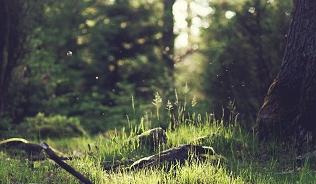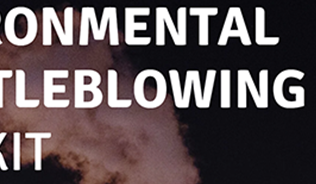In our traditional nod to the festive season, we share our 12 days of IES highlights from what was been a very successful year.
12 pieces of analysis
The IES Analysis pages are where environmental science professionals come to debate environmental issues. Our main theme for 2014 was energy, and so we began the year with the first factsheet in a series exploring the debate around different energy technologies, on fracking. Throughout the year, further factsheets have followed on nuclear power, uHPHT exploration, carbon capture and storage, and wind energy. In April, Peter Sanderson wrote a fascinating blog, ‘Bringing environmental science to local community work’. In the same month, the IES published a blog from Mark Everard, which made the point that ‘Nature is worth a lot more than nothing!’ in response to an article by George Monbiot criticising biodiversity offsetting. The debate continued in a blog from by Christopher Betts, which asked: ‘Biodiversity offsetting – help or hype?’. With major changes occurring at the European Commission, we began a new blog series in October, ‘The end of a green Europe?’; so far we have reviewed the achievements of previous environment Commissioner Janez Potočnik and looked at the structure of the new Juncker Commission. This series will continue in 2015. To finish the year, we reviewed what the Autumn Statement may mean for the environment and environmental scientists and posted the recording of the IES’ first webinar, given by Richard Broadbent on ‘Science and the law’.
11 drawers of membership records digitalised
Not the most glamorous job of the year but an important one. The office has digitalised all its existing paper records and archived them against your membership record. The primary reason was to recycle a lot of paperwork before our office move in 2015, but if you ever need access to electronic copies of your graduation certificates they are now just a few clicks away for an IES staff member. If you have previously submitted paper CPD records you will also be able to access these through our online CPD recording tool.
10 per cent growth in our subscribing members
Every single category of IES membership grew this year resulting in an overall membership growth of 10 per cent. We still rely primarily on word of mouth to market the IES. Why not encourage a colleague to join by pointing them in the direction of www.the-ies.org/joining?
9 new regional groups
Our nine regional groups launched in January bringing together members in each geographical region, to ensure our busy events schedule remains relevant and interesting for all members wherever they may be located within Ireland and the UK. Our first regional events have already been held in the Midlands, North East and South West.
8 Speakers at DMUG
DMUG 2014 rounded off another busy year for the IES’ sister organisation, the Institute of Air Quality Management (IAQM). Other IAQM events throughout the year included the launches of their Dust and Odour guidance documents and their AGM at which speakers from the political sphere took on the subject: What should be done to improve air quality? Another highlight of the IAQM year was their submission of evidence to the EAC ‘Action on Air Quality’ report.
7 per cent increase in student membership
The IES offers free student membership to students studying on our accredited programmes. The continued expansion of this scheme means that we engage with a wider audience of the next generation of environmental scientists.
6 IES reports
We have published 6 reports this year, starting with our Annual Report in March. Our Membership survey in June - in which 99% of members stated they would recommend the IES to a colleague - showcased our new report layout. This was also used for our survey of UK Local Authorities looking at the issue of air quality and planning. We also updated our Environmental Funding Streams report, which brings together a list of available funding streams for research, careers or projects in the environmental sciences. Our definitive guide to salaries in the sector was published in July and we finished the year with a report looking at finding employment over the age of fifty.
5 universities applied for accreditation
The CHES accreditation scheme is a mark of quality in higher and further environmental science education. The number of degree programmes we accredit rose to 75 across 26 institutions, making it the largest scheme of its kind. As part of this work we spoke at seven career events at universities around the country.
4 journals
2014 was another year in which the environmental SCIENTIST continued to break new ground. The year kicked off with The Energy Trilemma, providing a detailed look at how to provide affordable energy, with security of supply and the minimum possible damage to the environment. April saw the publication of The Contentious Issue, exploring some of the more controversial topical environmental issues, and how systems thinking can help scientists understand and solve these problems. Our October edition examined Water Security, providing insights into the many complex challenges and considerations that need to be addressed if we are to achieve global water security.
We ended the year with an issue which summarises the scope and outcomes of the UK National Ecosystem Assessment and the subsequent Follow-on report in UK National Ecosystem Assessment: what now? A paper copy of the journal should arrive with members shortly after Xmas.
3 new staff members
We created a new post of Marketing and Events Officer, which was taken up by Emma Fell In March. Over the summer we took on an intern, Dominic Sheldon, and Robert Ashcroft joined the team in October as our new Publications and Policy Officer. The IES continues to attract great talent who can push the IES forward. The work of our CEO was recognised through the Young Leader of the Year Award in December and our commitment to membership care was underlined in our membership survey when 94% of members rated their interaction with the office as ‘excellent’ or ‘good’.
2 new guidance documents
The IAQM continued to cement its position as the authoritative voice for best practice in air quality through the publication of two pieces of guidance: on dust from demolition and construction in February and on odour for planning in May.
1 new register
We are delighted to announce we have received approval from the Environment Agency to offer a register of professionals able to act as ESOS Lead Energy Assessors. This new professional register will be available to IES members in 2015.
We hope that you have enjoyed your membership this year as much as we have in delivering the services. We look forward to working to develop your career and knowledge in 2015.



